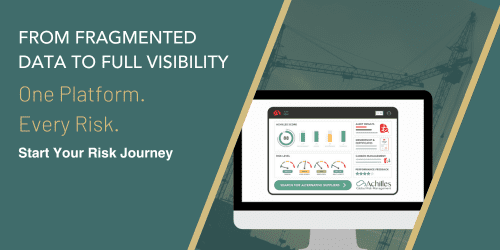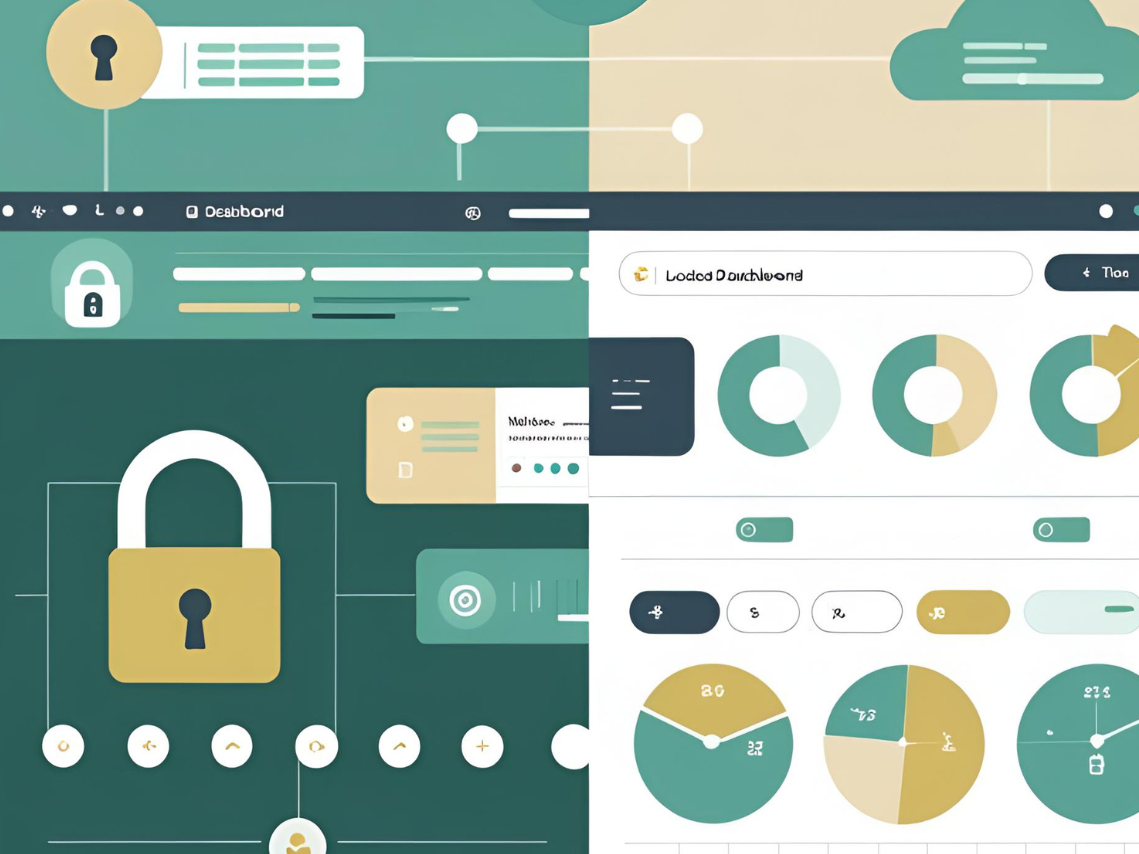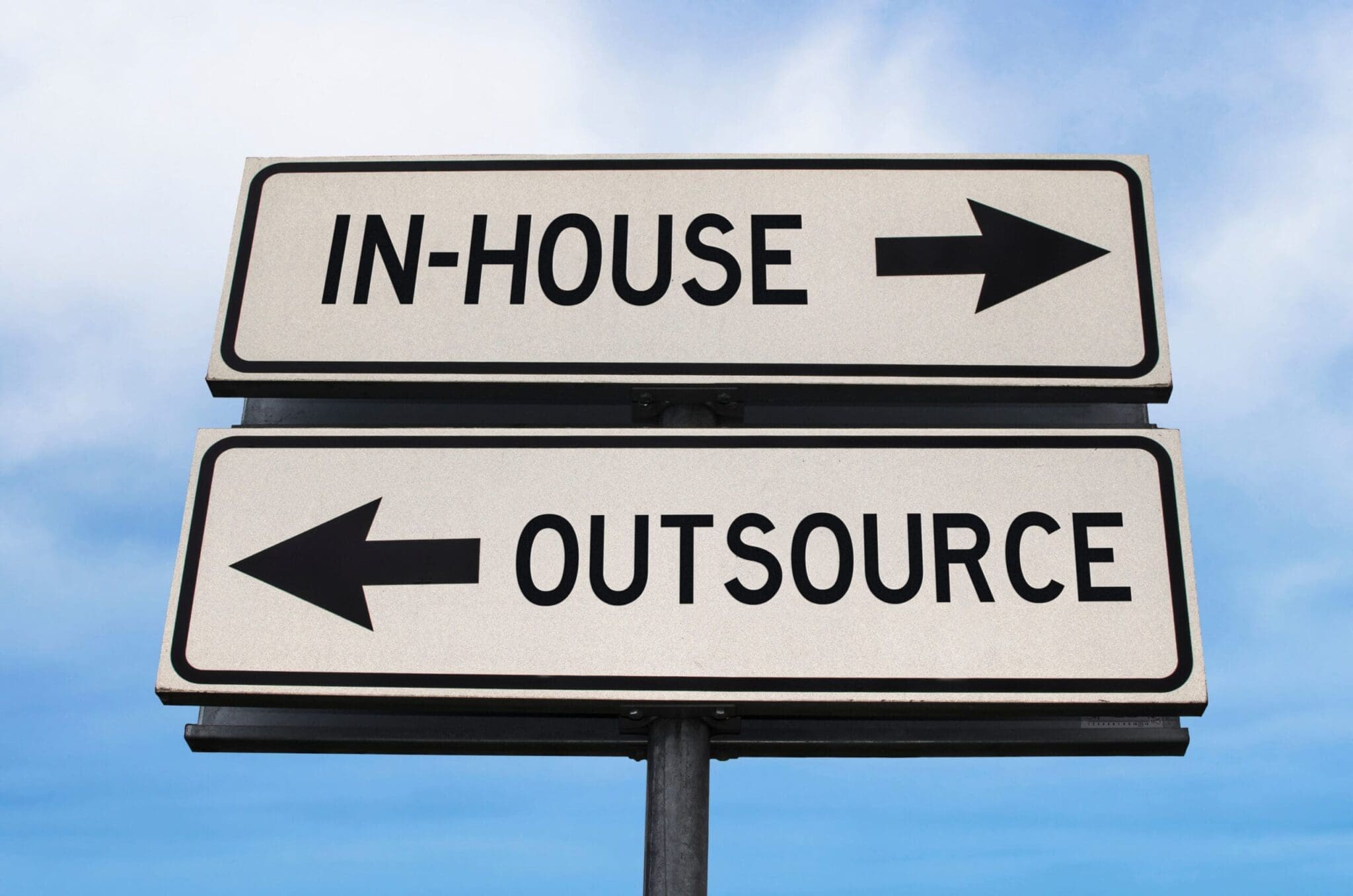Rebuilding Construction Supply Chain Risk Management
The construction sector faces a unique combination of pressures: large, decentralised supply chains, high-value contracts, and growing accountability to regulators and stakeholders. As these demands converge, the need for clarity across the construction supply chain has never been more urgent. Yet many large organisations still manage risk and compliance using disconnected tools, spreadsheets, and department-specific systems. This fragmented approach can lead to major oversights and increased exposure.
With the rise of digital procurement, ESG standards, and performance-linked contracts, large construction and infrastructure firms are reassessing how they manage supplier data, ensure compliance, and maintain operational resilience.
Why Fragmented Data Still Dominates UK Construction
Despite technological advances, many firms continue to operate with siloed processes: procurement in one system, HSEQ in another, and finance working separately. This fragmentation makes it difficult to get a true picture of construction risk management across projects or suppliers.
A Salesforce study found that eighty‑one per cent of organisations report data silos are hindering digital transformation efforts
Data silos increase the chances of duplication, inconsistent decision-making, and missed warning signs. In today’s risk environment, where contractors are under pressure to prove due diligence, disconnected data is not just inefficient — it is risky.

Common Construction Risks That Go Unseen
In large construction programmes, risks often go undetected because key information is locked in different systems or teams. Some of the most common construction risks that are made worse by fragmented data include:
- Subcontractor insolvency or poor safety records only discovered after project mobilisation
- Inconsistent audit findings across multiple projects or regions
- Untracked Scope 3 emissions with no supplier engagement strategy in place
- Missed certifications or expired insurances due to manual processes
- Slow response to compliance issues, particularly in complex, multi-tiered subcontractor environments
For firms managing multiple projects and hundreds of suppliers, these gaps can lead to increased non-compliance, financial exposure, and reputational damage.
The Role of Integrated Risk Management Tools
Integrated risk management tools help centralise and streamline the entire process; from supplier onboarding to continuous monitoring. By consolidating procurement, sustainability, audit and compliance data in a single platform, teams gain shared visibility across the construction supply chain.
This level of integration supports better decision-making and faster mitigation, particularly in high-risk supplier categories such as temporary labour, demolition, or environmental services. Teams no longer need to rely on emailed spreadsheets or one-off audits. Instead, they can use real-time dashboards, supplier scores, and alert-based systems to stay ahead.
Subcontractor Management at Scale
Managing subcontractors remains one of the biggest pain points in construction procurement. With thousands of suppliers and specialist trades involved in any major infrastructure project, vetting, validating and monitoring performance is a significant task.
UK public sector frameworks and private tier 1 contractors increasingly require use of a recognised compliance platform to ensure supplier due diligence is consistent and defensible. Platforms that align with standards like the Common Assessment Standard (CAS) help reduce duplicated effort while increasing transparency.
Another Salesforce survey revealed 95 percent of organisations struggle to integrate data across systems, with only 29 percent of applications integrated on average
These findings highlight how data fragmentation hampers audit readiness and compliance tracking, issues that compliance platforms directly address.
Additionally, a Global Market Insights report shows the construction procurement software market was valued at USD 851 million in 2023, with a projected CAGR of 8.5 percent through 2032, demonstrating clear investment in digital compliance and supply chain tools
Streamlining Procurement and Compliance with Better Tools
A centralised compliance platform can enable organisations to:
- Validate supplier information once and share it across projects
- Track carbon and ESG performance alongside audit results
- Trigger alerts for high-risk suppliers based on configurable thresholds
- Automate reminders for renewals, assessments and documentation
- Standardise use of a construction audit checklist across the organisation
These capabilities are especially useful when working across joint ventures, regional hubs, or in post-contract compliance monitoring.
Addressing Construction Supply Chain Issues Proactively
Whether you are tackling late project deliveries, variable safety performance, or supplier fatigue from repeated assessments, visibility is key. Construction supply chain issues are rarely caused by a single event. They build up due to lack of real-time insight and delayed intervention.
This is where tools like integrated risk management platforms can play a strategic role. By consolidating fragmented data across departments, they create a single source of truth for supply chain risk and compliance.
Solutions like Achilles BuildingConfidence offer clients a way to build this visibility across health and safety, financial risk, ethical labour practices and more, all in one platform. By enabling construction procurement teams to collaborate with sustainability, HSEQ and commercial functions through shared insights, they support faster decisions and more consistent standards.
A Smarter Way to Manage Construction Risk
In the current market, risk is not just about identifying issues, but being able to prove that you did. Investors, regulators and clients are all expecting stronger governance across the value chain, particularly in areas like modern slavery, carbon reporting and operational resilience.
When project teams can access real-time supplier data, they reduce uncertainty, strengthen their audit trail, and spend less time firefighting.
The construction sector is already under pressure to do more with less. Moving from fragmented processes to integrated systems is not just about compliance. It is about making smarter, faster decisions that protect your people, your reputation, and your bottom line.
Ready to move from fragmented data to full visibility?
Explore how the Achilles ecosystem helps construction leaders turn complexity into clarity across procurement, risk, and compliance.





